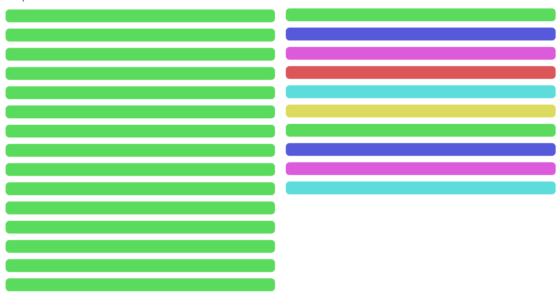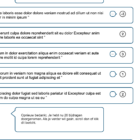Diversity: different perspectives
In a group of friends, I like to hear how everyone is doing. And if we are in a dialogue about a subject, I like to hear what others think about it. Then I learn more. After an hour or so, some very interesting things often come out of it! And sometimes it goes all directions. Or it ends in a fierce discussion, in which we defend our own point of view and forget to listen, let alone learn. I learn the least when someone else thinks the same way I do. It’s nice to see it as confirmation, but quite boring because there is bound to be something new to discover. I find diversity of perspectives more interesting; how do others think differently and why?
Night’s sleep is necessary to learn
I learn the most from different perspectives (video Lorenzo Barbaris, PhD at Stanford). Especially if I can sleep on it. Then what other people say or what I read is more likely to sink in and the next day I can get a fresh perspective or see things more clearly. The brain is good at that, such a night’s sleep. At night, the brain clears out a lot and makes room to learn and come up with new ideas the next day. A bit of rest, contemplation, reflection. Listening and learning simply takes time. The brain even requires it.
How to use the dialogue
In the CircleLytics dialogue, we copy that smart and necessary process of people, of learning and of our brain. First of all, the questions you ask a group in the first round provide focus, to prevent them from wandering off. By doing so, you make the subject crystal clear. Download our WhitePaper to become a serious expert in formulating solid, open questions. Secondly, in the second round, people can see and learn from other people’s perspectives. And thirdly, they can take their time. What I previously said about myself, we apply extensively in the dialogue: time for reflection. It is indeed true that a night’s sleep helps. Putting people into a workshop for an hour or two simply does not bring out the best in them or the group. Even worse; if you increase people’s stress, it lowers their empathy. This makes them less open to other perspectives. So less open to diversity. That’s not a good thing, but it’s good news for your CircleLytics dialogue. In other words; a few necessary days of rest and reflection, in both rounds.
What happens in the second round?
It’s quite simple. For each active participant in the 2nd round, our unique algorithms create a set of 10-15. Quite different from a survey that does not allow this. So, a set of 10 to 15 anonymised contributions from others from the 1st round. Until the beginning of this year, it was 20, and now it’s a bit less. Each participant gets a different set, so every active participant. Because if we prepare sets for non-active participants and someone does not participate in the 2nd round, the set is lost and that is not the intention. How we make the sets is something we keep to ourselves mostly. What we do share with you is that it is extremely complex. Since the new version in February, we pre-cluster after the end of the 1st round. We use different algorithms and artificial intelligence to make sure each set is as diverse, as colourful as possible. This depends on your specific dialogue. It can take serious minutes before the invitations for the 2nd round are sent out and you, as the creator of the dialogue, receive a notification of this via your e-mail. Because of this increased diversity, people learn more from each other and are more surprised.
Colourful & mitigating bias
Look at the picture. The left set is the old algorithm, where randomisation and other techniques already led to considerable diversity but without clustering. On the right, we show what it looks like after clustering in the new version of the CircleLytics dialogue.  Clustering – playfully expressed with colours for you here – ensures that contributions from round 1 are grouped together based on similarity. Participants only see a few contributions from the same cluster (see picture: a few times the same colour). We have developed a technique of cleverly ‘jumping’ between clusters, showing the participant a varied set of contributions. This way we mitigate the very unwelcome mere-exposure bias (mere-frequency bias). This bias means that respondents (or algorithms such as topic modelling in normal survey tools) favour things they see more.
Clustering – playfully expressed with colours for you here – ensures that contributions from round 1 are grouped together based on similarity. Participants only see a few contributions from the same cluster (see picture: a few times the same colour). We have developed a technique of cleverly ‘jumping’ between clusters, showing the participant a varied set of contributions. This way we mitigate the very unwelcome mere-exposure bias (mere-frequency bias). This bias means that respondents (or algorithms such as topic modelling in normal survey tools) favour things they see more.
Extra benefit:Deep Democracy
In addition, the new algorithms ensure that contributions that do not appear often in round 1 are shown slightly more often. In this way, we prevent those scarce, unique contributions (minority opinions) from being relatively under-represented among participants in the second round. Deep democracy, in which minority opinions receive extra attention, is therefore much better safeguarded in the dialogue than ever before. More colour, more diversity!
Did the scoring by participants also change?
Yes. We will show 10-15 contributions instead of 20 from now on. After that you will be thanked and you may stop. Or continue.  Then, for every 5 contributions, we will show that new message as you can see in the picture on the right: we will thank you and tell you again that you may stop or continue. The participant is free to do so. Sometimes participants read over it. But not anymore; the message is now like a sort of button. Did you know that more than 70% of the participants rated more than 30 contributions? More than 50% of the participants even rate more than 40-50. This means a huge involvement of participants and apparently a nice, attractive experience for them. Your solid questions, relevance of subject matter and preparation of the dialogue obviously help tremendously, don’t forget that.
Then, for every 5 contributions, we will show that new message as you can see in the picture on the right: we will thank you and tell you again that you may stop or continue. The participant is free to do so. Sometimes participants read over it. But not anymore; the message is now like a sort of button. Did you know that more than 70% of the participants rated more than 30 contributions? More than 50% of the participants even rate more than 40-50. This means a huge involvement of participants and apparently a nice, attractive experience for them. Your solid questions, relevance of subject matter and preparation of the dialogue obviously help tremendously, don’t forget that.
What else is new?
We also made the buttons to go to the next or previous question more visible: orange, and as a clear button. We first used a simple black arrow. Sometimes participants did not understand that. Participants are very happy with the new layout: we can see that in the ratings for the dialogue. We have achieved a score of 8 out of 10
What is the result of it all?
Diversity has been increased. This means that we are doing more to stimulate and appeal to people’s brainpower, which benefits your results:
- participants rate and score more contributions because they see more new contributions
- they are even more satisfied and involved in your dialogue and subject matter
- they spend more time in your dialogue, which is good for their awareness
- deep democracy: the minority opinion now receives equal attention.
Unlike a survey or a workshop of an hour or two, reflection time and the 2nd round ensure that you get more insight and better results on your questions. By increasing diversity, CircleLytics shows again that we listen to your feedback and continue to analyse the data on the behaviour of participants in the dialogue. This is one of the reasons why we keep making the dialogue smarter and launch a new version every 6-8 weeks. This is how we keep the CircleLytics dialogue the best online dialogue in the world. For you, your challenges and especially for your people.
Contact us today to get started tomorrow.


